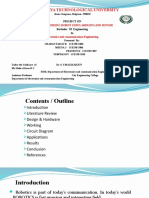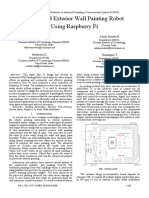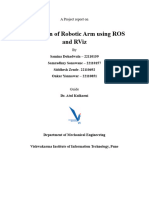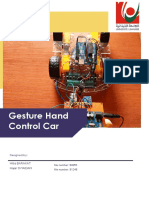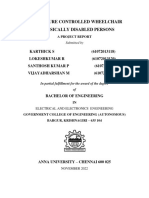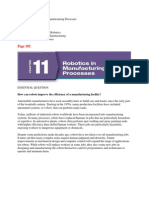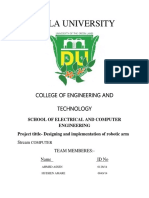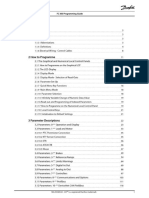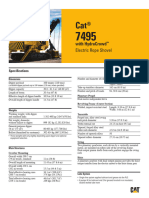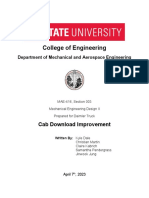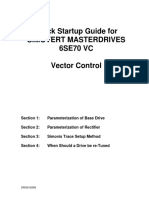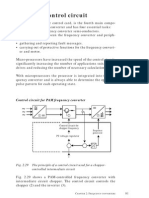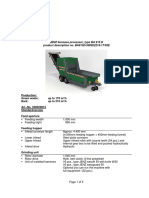0% found this document useful (0 votes)
248 views17 pagesProject Report On Robotic Arm
This project report describes the design and development of a robotic arm. The robotic arm is designed with five degrees of freedom and multiple servo motors to enable it to perform simple tasks like materials handling. The arm is controlled by an ATmega328p microcontroller using Arduino programming. Potentiometers are used to detect joint angles and send signals to the microcontroller. The report discusses the working of the arm's components like servo motors, joysticks, Bluetooth module and hardware. It is meant to overcome issues like handling hazardous materials or performing repetitive tasks that are difficult for humans. The arm has applications in fields like manufacturing, nuclear industries, and for assisting people with disabilities.
Uploaded by
Gina SreeCopyright
© © All Rights Reserved
We take content rights seriously. If you suspect this is your content, claim it here.
Available Formats
Download as DOCX, PDF, TXT or read online on Scribd
0% found this document useful (0 votes)
248 views17 pagesProject Report On Robotic Arm
This project report describes the design and development of a robotic arm. The robotic arm is designed with five degrees of freedom and multiple servo motors to enable it to perform simple tasks like materials handling. The arm is controlled by an ATmega328p microcontroller using Arduino programming. Potentiometers are used to detect joint angles and send signals to the microcontroller. The report discusses the working of the arm's components like servo motors, joysticks, Bluetooth module and hardware. It is meant to overcome issues like handling hazardous materials or performing repetitive tasks that are difficult for humans. The arm has applications in fields like manufacturing, nuclear industries, and for assisting people with disabilities.
Uploaded by
Gina SreeCopyright
© © All Rights Reserved
We take content rights seriously. If you suspect this is your content, claim it here.
Available Formats
Download as DOCX, PDF, TXT or read online on Scribd
/ 17



















